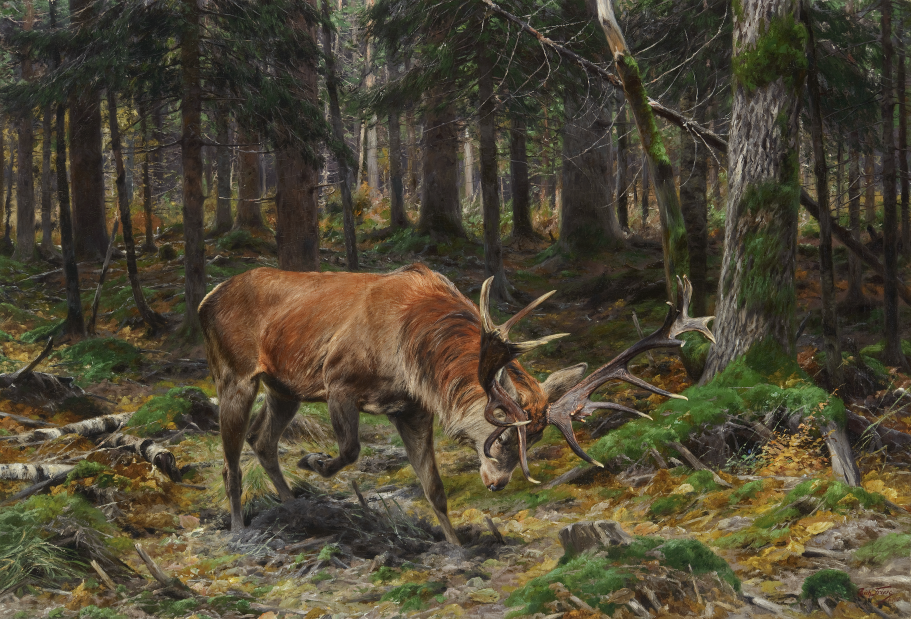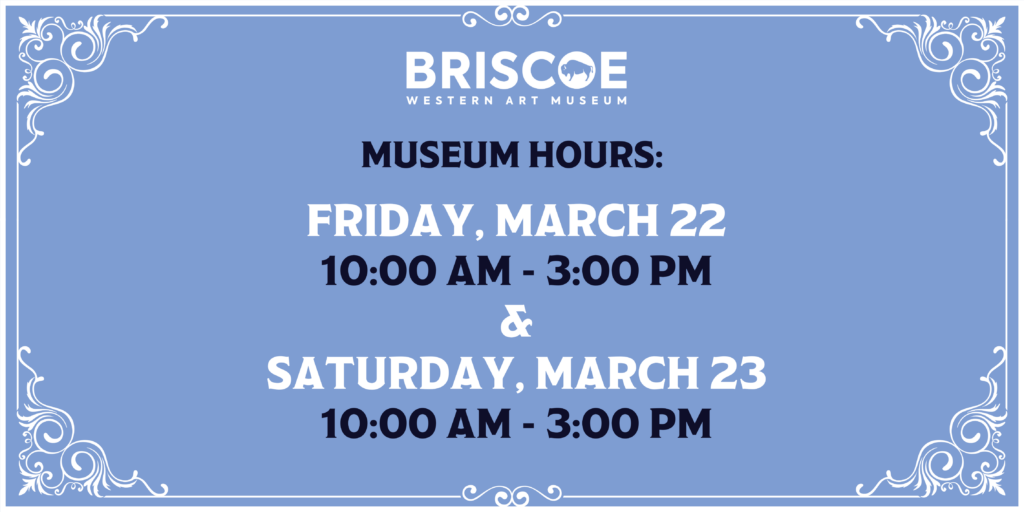- Visit
Briscoe Western Art Museum
Explore the art and artifacts that bring the stories of the West to life.
- Exhibitions
Survival of the Fittest: Envisioning Wildlife and Wilderness with the Big Four
June 14 – September 8
- Learn
Briscoe Learning Opportunities
Whether you’re planning a family trip, a date night or a field trip, The Briscoe has a wide range of educational activities for all age groups.
- Support
Become a Briscoe Member
Support the museum’s mission to preserve and promote the shared heritage of the American West.


Richard Friese, Deer in a Forest Glade, 1912, oil on canvas, 49.75 x 77.25 in.
On Loan JKM Collection, National Museum of Wildlife Art.
Survival of the Fittest features approximately 50 masterworks created by an influential group of painters known today as the Big Four. Working during the late 1800s and early 1900s, these artists established a vision of wildlife and wilderness that remains with us to this day. Their careers also influenced generations of artists interested in painting wildlife in the 20th century. Members of the Big Four include American Carl Rungius (born Germany, 1869 – 1959), Germans Richard Friese (1854 – 1918) and Wilhelm Kuhnert (1865 – 1926), as well as Bruno Liljefors (1860 – 1939) from Sweden.
Representations of wildlife in natural habitats, though common today, were not always the norm. The popularization of Charles Darwin’s theories on evolution in the middle to late 1800s began a shift (especially among European-Americans) toward understanding wildlife and nature together. Faced with the destructive legacy of European colonial expansion, an emerging conservation movement sought to preserve the land and animals that remained. Government surveys and scientific expeditions began traveling into remote regions to study wildlife and natural habitats, often accompanied by an artist. Soon thereafter, artists began traveling to study intact wildlife populations on their own.
The artists of the Big Four, working at the same time but in separate regions of the globe, broke new ground by picturing wild animals in ways that had not been widely seen before by Europeans or Americans. Their powerful images gave eager audiences a way to see what lay beyond urban centers and brought a new vision of the wild into increasingly domesticated lives. Their paintings did not feature animals from biblical narratives or scenes from popular fables but instead emphasized the importance of seeing creatures in their natural habitats, enacting natural behaviors. The artwork of the Big Four was transformational in its presentation of a vision that valued the animal and its habitat as two inseparable and interdependent parts of a larger ecological system.
Survival of the Fittest: Envisioning Wildlife and Wilderness with the Big Four, Masterworks from the Rijksmuseum Twenthe and the National Museum of Wildlife Art is curated by Adam Duncan Harris, Grainger/Kerr Director of the Carl Rungius Catalogue Raisonné and organized by the National Museum of Wildlife Art. The exhibition is sponsored in part by The City of San Antonio, Jan McCaleb Elliott, Betty Steiren Kelso Foundation, Jessica Elliott Middleton, Debbie and John T. Montford | The Plum Foundation, The Texas Commission on the Arts, and Williams – Chadwick Family Charitable Fund of the San Antonio Area Foundation.
Get Art and Updates in your Inbox
T. 210.299.4499
F. 210.299.4118
info@briscoemuseum.org
© 2023 The Briscoe Western Art Museum. Powered by Tribu Creative

